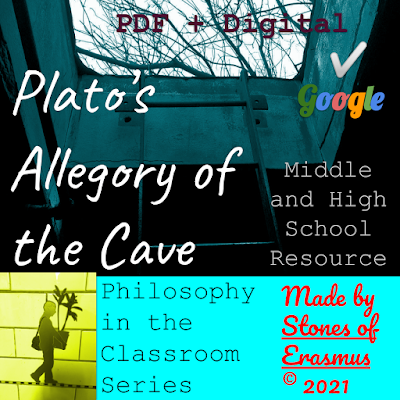In this post, I write about how teachers, specifically high school English and Humanities teachers, can use the Kahoot! platform to enhance their lessons and engage students.
 |
| I use Kahoot! in the high school classroom as a formative assessment. It's a fun way to start a lesson, end a lesson, review for a test, or drum up a bit of healthy competition. Find my Kahoot! profile here! |
What is Kahoot!?
Engaging students in the classroom can be challenging in a world where educational content is increasingly delivered online. Kahoot! is a game-based learning platform that makes it easy to create, play, and share learning games.
Kahoot! is a gamified quiz platform — it can be used for any purpose where there is a question and an answer, making it perfect for teachers and trivia masters at your local pub or family trivia nights.
Who Started Kahoot!
Kahoot! was created by Johan Brand, Jamie Brooker, and Morten Versvik in Oslo, Norway. The quiz is based on research by Professor Alf Inge Wang and his colleagues at the Norwegian University of Science and Technology (NTNU).
What makes Kahoot! so enticing is that it's fun to use — and people can join Kahoot! with any device connected to the Internet. The platform takes the power of the question and couples it with competition, points, sound effects — and more.
How Van Kahoot! Be Used in the Classroom?
Kahoot! is a great way to engage students in the classroom, especially in the humanities. Games can be played on any topic, and there is a vast library of existing games to choose from. You can also create your own games.
Kahoot! is not just for high school students – it can be used in any classroom or course. It is also a great way to study for exams or to review for a test.
If you are a teacher, you can use Kahoot! to create engaging educational content for your students. If you are a student, you can use Kahoot! to study for your courses or review exams. Either way, Kahoot! is a great way to learn.
The Benefits of Using Kahoot! in the Classroom
I am teaching my Eighth grade English Language Arts students a unit on Plato's Allegory of the Cave. It's a popular lesson I sell on Teachers Pay Teachers and on Amazon Ignite! I even have a free version. In the lesson, we wonder about Plato's view of reality; the essential question is, what is real?
What teachers have said about my digital educational resources:
Love this product! Very thought-provoking. I used this distance learning with students in zoom class.
— Aron H.
Creating a Kahoot! Course for Plato's Allegory of the Cave
 |
Kahoot! Courses are a fantastic way to organize
gamified activities around a singular topic
— here is one I made on Plato's Cave. Check it out. |
I aligned sixteen different Kahoots to our learning objectives. The lesson plan came first — the intellectual work was the most challenging- putting it together. So with Kahoot! I was able to make a course based on all of my hard work. And voilà. It has made the unit so much more engaging for my students!
How to get started with Kahoot! in the classroom
Kahoot! is free to start — and if you like it and want to create and access more sophisticated content, Kahoot! has several different-priced tiered plans.
Full disclosure — I am a verified creator on the Kahoot! Marketplace.






